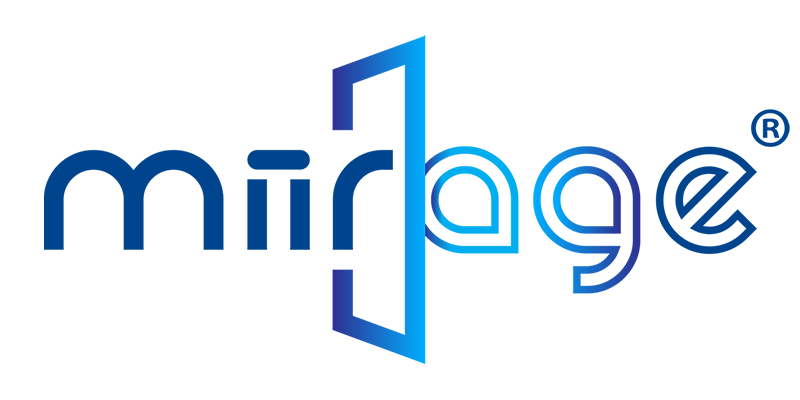The Attention Crisis: Capturing Attention in Advertising

Capturing attention has become advertising’s greatest challenge. From smartphones to digital billboards, consumers are bombarded with thousands of messages daily. According to a study by Forbes, the average person now sees between 6,000 and 10,000 ads every single day. But amidst this noise, one fundamental truth remains: attention is the currency of advertising, and it’s becoming scarcer by the second.
The Attention Crisis
Our attention spans are dwindling. Research from Microsoft found that the average human attention span dropped from 12 seconds in 2000 to just 8 seconds by 2015, less than that of a goldfish. Meanwhile, traditional digital signage, once novel, now blends into the visual background of our lives. Flat screens, once eye-catching, are now largely ignored, especially in environments like shopping malls, train stations, and city streets where people are conditioned to filter them out.
Consumers have grown desensitized to flat, two-dimensional content. The digital fatigue is real. A 2023 Nielsen report noted that 65% of consumers actively avoid ads, while 74% of people say they notice ads less now than they did five years ago. The effectiveness of display advertising has declined as a result. Click-through rates (CTR) on standard banner ads are now less than 0.1%, and even video completion rates are dropping as users swipe, scroll, or skip at lightning speed.
In short, getting noticed is no longer guaranteed, and holding attention is even harder.
The Holographic Advantage
Enter holographic displays, a revolutionary leap in visual communication that reclaims lost attention by doing something flat screens no longer can: stopping people in their tracks.
Unlike traditional screens, holographic displays introduce depth, dimensionality, and presence. They project life-sized, free-floating visuals that appear to exist in physical space, creating a natural sense of wonder and novelty. The psychological impact is profound. Studies in experiential marketing show that multi-sensory and spatially unexpected content can increase memory retention by over 70% and emotional engagement by more than 80%.
When a holographic image appears in a public space, people look. They take out their phones. They gather. They pay attention. And in the attention economy, that kind of interaction is priceless.
Real-World Performance
In pilot campaigns using holographic displays in retail and public spaces, brands have reported up to 5x higher engagement rates compared to standard digital signage. One study found that dwell time near holographic displays was over 300% longer, while recall rates for holographic content exceeded 90% after 24 hours, compared to just 20-30% for 2D signage.
Retailers are taking note. At trade shows, shopping centres, airports, and flagship stores, brands deploying holographic technology are seeing increased foot traffic, social shares, and conversion rates. The novelty is not a gimmick, it’s a solution to a fundamental problem: getting seen in a world of digital saturation.
Attention Is the Battleground
In 2025 and beyond, the advertising industry isn’t competing for budgets, it’s competing for attention. And the brands that win will be those who harness technology not just to broadcast, but to intrigue, captivate, and immerse.
Holographic displays don’t just represent the next evolution in display hardware, they represent a philosophical shift. From passive consumption to active engagement. From flat to full-bodied. From ignorable to unforgettable.
As attention becomes more limited, those who can truly capture it will lead the next era of advertising.
Goodbye Flat. Hello Depth.
Unlike traditional screens, holographic displays don’t just show content, they project it into space. Depth, perspective, and realism transform an ad or product demo into something that feels alive, present, and impossible to ignore.
Think about it: in a crowded shopping mall or busy airport, a hologram isn’t just another rectangle on a wall. It’s a three-dimensional presence that stops people mid-stride. It’s not about pixels anymore; it’s about presence.
The Attention Advantage
In the attention economy, capturing even a few seconds of focus is gold. Research shows that holographic displays can triple audience engagement compared to 2D screens. That’s because the brain processes 3D visuals differently; they’re harder to tune out and far more memorable.
For advertisers and retailers, that means more dwell time, stronger recall, and ultimately, a higher return on investment. In other words, holograms don’t just look futuristic, they work.
Why Retail Media and OOH Are Turning to Holograms
Retail media networks and out-of-home (OOH) advertising are under pressure to deliver impact without oversaturating audiences. Static signage is fading into the background, while even digital billboards risk blending into the noise.
- In malls, they transform window shopping into an immersive experience.
- In airports, they offer travelers an unexpected, premium brand moment.
- In corporate spaces, they signal innovation before a single word is spoken.
It’s advertising that feels less like an interruption and more like an encounter.
Miirage and the Next Wave of Display Innovation
At Miirage, we see holograms not as a novelty, but as the natural next stage in display evolution. Our technology is designed for high-footfall environments, combining ease of installation with jaw-dropping impact. No headsets, no apps, no QR codes—just instant immersion.
And because our displays are built for scale, brands and OOH partners can roll out holographic campaigns quickly, without the usual risks that come with untested media formats.
The Screen Era Is Ending. The Hologram Era Is Here.
The display industry has always evolved in leaps, from radio to TV, from desktop to mobile, from static to interactive. Holograms are the next leap. They’re not a gimmick; they’re the new standard for grabbing attention in a world where attention is everything.
The only question left is: who will embrace it first?
Further Reading
- Attention Economy—Theoretical Foundations (Wikipedia)
- The Attention Economy in Action on Social Media (Sprout Social)
- Navigating 2025’s Attention Crisis in Digital Marketing (VisionFactory)
- Why Over 80% of Ads Don’t Reach the “Attention Threshold” (WARC)
- Regulating the Attention Market: Ethical Implications (arXiv)
